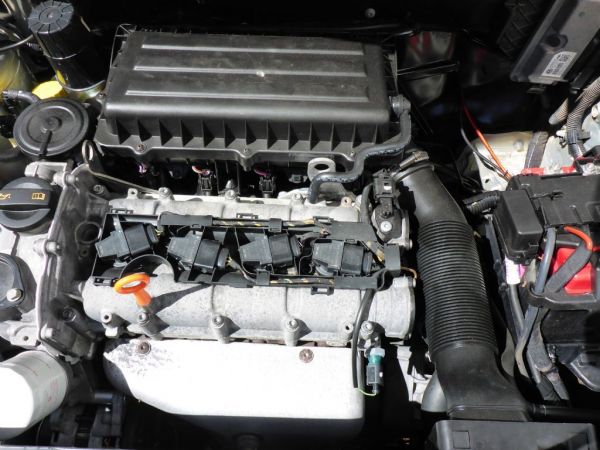Reduce maintenance costs with a well-built clp engine.
Reduce maintenance costs with a well-built clp engine.
Blog Article
Exactly How a Clp Engine Can Enhance Effectiveness in Different Industries
The advent of CLP engines marks a considerable shift in operational effectiveness across various markets, driven by their capacity to enhance fuel usage and decrease downtime. As companies increasingly prioritize sustainability alongside efficiency, the duty of CLP engines comes to be even more vital.
Overview of CLP Engines
CLP engines, or Constant Liquid Propellant engines, stand for a substantial advancement in propulsion modern technology, particularly for room applications. These engines utilize a continual feed system that permits the sustained expulsion of propellant, leading to boosted effectiveness and efficiency compared to conventional solid or hybrid propulsion systems. By preserving a consistent circulation of liquid propellant, CLP engines can accomplish more specific thrust control, which is crucial for maneuvering spacecraft in various mission circumstances.
The layout of CLP engines integrates advanced materials and innovative gas monitoring systems. clp engine. This causes decreased weight and enhanced dependability, important factors for long-duration area missions. The continuous procedure minimizes the threat of combustion instability, a common obstacle in conventional rocket engines.

Benefits in Manufacturing
The production of Continuous Fluid Propellant (CLP) engines presents several notable advantages that boost both efficiency and cost-effectiveness. One of the main advantages is the streamlined production procedure, which decreases the intricacy connected with traditional propulsion systems. By making use of liquid propellant, suppliers can achieve higher accuracy in engine efficiency, causing optimized energy result and reduced waste.
Additionally, CLP engines assist in a greater degree of modularity, permitting much easier combination into different manufacturing lines. This versatility can considerably reduce preparations and improve general functional versatility. The use of CLP innovation additionally often tends to decrease the demand for substantial upkeep as a result of less relocating components, which converts into reduced downtime and operational expenses.

Applications in Logistics
Leveraging Continual Liquid Propellant (CLP) engines in logistics offers significant advantages look these up in operational effectiveness and integrity. These engines supply a robust option for numerous transportation requirements, allowing the smooth activity of items across substantial ranges. The fundamental layout of CLP engines permits consistent power output, which translates right into smoother and extra foreseeable transportation schedules.
One of the essential applications of CLP engines in logistics remains in durable products transportation, where they can drive both ground and aerial cars. Their ability to maintain high efficiency under differing load conditions ensures that shipment timelines are met, thus boosting consumer complete satisfaction. Furthermore, CLP engines can be integrated right into automated logistics systems, facilitating real-time tracking and maximizing course planning.
Moreover, the durability of CLP engines lowers upkeep downtime, allowing logistics companies to optimize their functional capabilities. This is specifically advantageous in warehousing operations, where effectiveness in dealing with and moving items is vital. As logistics remains to progress, the assimilation of CLP engines stands for a forward-thinking technique that not only boosts performance yet additionally supports the market's growing demands for integrity and speed.
Influence on Power Effectiveness
Just How do Constant Fluid Propellant (CLP) engines boost power performance in transport? CLP engines utilize a consistent flow of liquid fuel, maximizing burning processes and keeping a useful link secure thrust outcome. This style decreases power losses related to typical burning engines, where fuel shipment can vary and lead to inadequacies.
The constant procedure of CLP engines permits a more effective thermal cycle, resulting in higher certain impulse compared to conventional engines. clp engine. This translates to reduced fuel consumption for the same amount of job done, considerably lowering functional prices across different transport industries, consisting of aviation and maritime sectors
In addition, the capability of CLP engines to preserve optimum performance under varying lots conditions decreases the demand for constant velocity and deceleration, better improving fuel efficiency. Enhanced energy performance not only adds to cost savings but likewise causes decrease greenhouse gas exhausts, straightening with worldwide sustainability objectives.
Future Trends and Innovations
Emerging developments in Continual Fluid Propellant (CLP) engine modern technology assurance to revolutionize the landscape of transport efficiency and sustainability. As markets pivot toward greener alternatives, CLP engines stand at the center, integrating cutting-edge materials and design approaches that improve efficiency while lessening environmental influence.
One of one of the most promising trends is the fostering of crossbreed systems that incorporate CLP engines with renewable resource resources. This synergy can optimize fuel consumption and reduce discharges, lining go to these guys up with international sustainability objectives. Moreover, developments in computational fluid characteristics (CFD) are helping with the layout of more aerodynamically efficient engines, bring about lowered drag and boosted gas performance.
Furthermore, the growth of smart tracking systems is set to enhance functional effectiveness. These systems take advantage of data analytics and IoT technology to maximize engine efficiency in real-time, guaranteeing that the engines operate within their most efficient criteria.
As study remains to check out alternative propellant solutions-- such as biofuels and synthetic gas-- the future of CLP engines looks promising. By using these technologies, markets can not only boost their performance however also contribute considerably to a cleaner, more sustainable future in transportation.
Conclusion
In final thought, CLP engines represent a considerable innovation in efficiency throughout multiple sectors. The assimilation of sophisticated materials and fewer moving components minimizes maintenance requirements, while positioning with sustainability goals placements CLP engines as an essential modern technology for the future.
Report this page